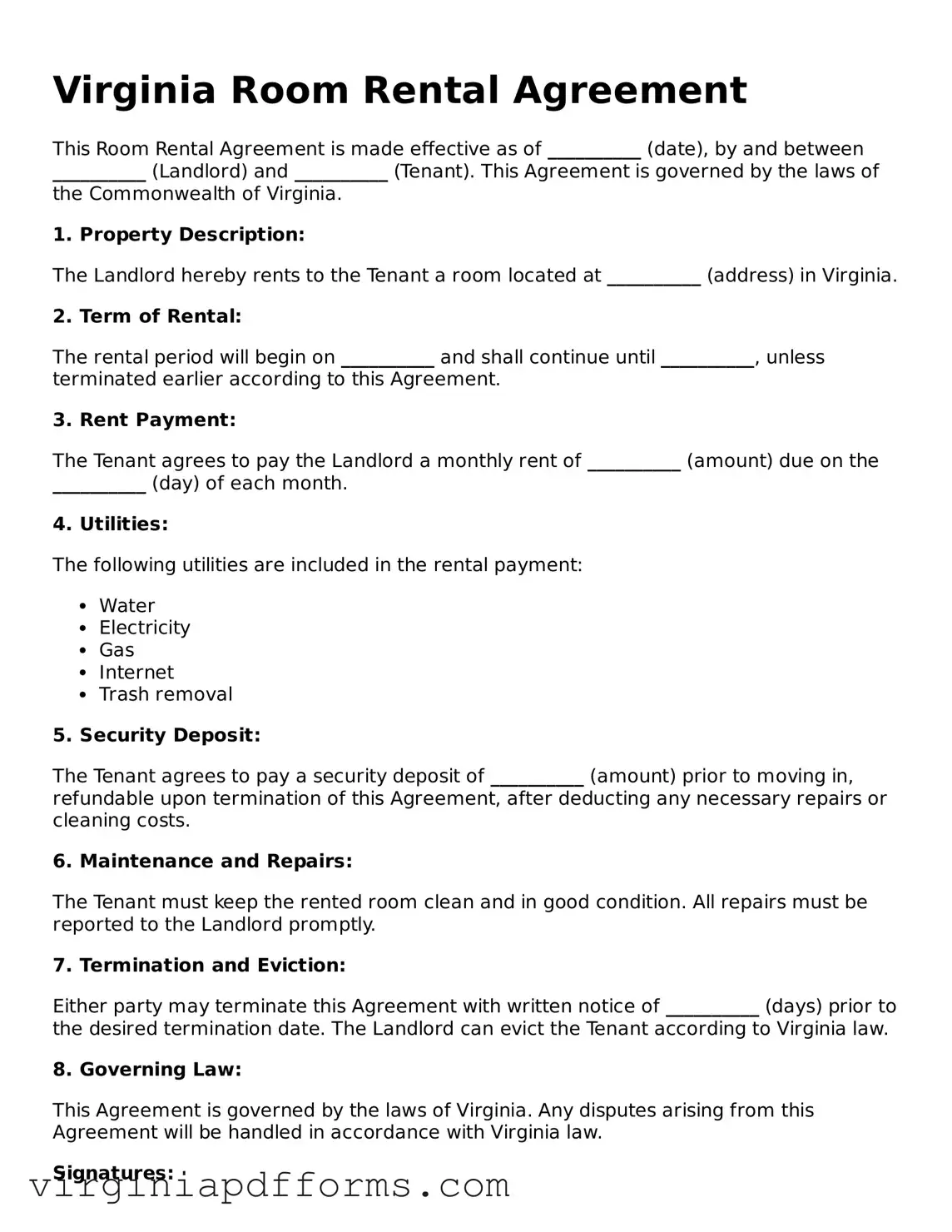Attorney-Approved Virginia Room Rental Agreement Document
The Virginia Room Rental Agreement is a legal document that outlines the terms and conditions between a landlord and a tenant for renting a room in Virginia. This agreement serves to protect the rights of both parties and ensures clarity regarding rent, security deposits, and other important rental terms. Understanding this form is essential for anyone involved in a room rental situation in Virginia.
Access My Document Now
